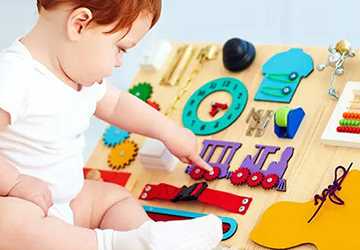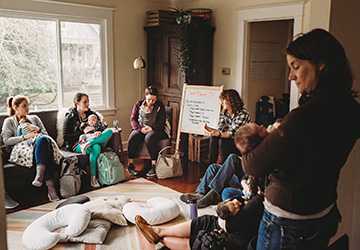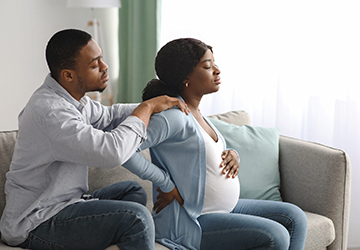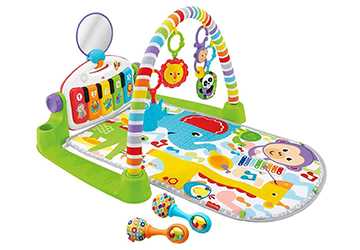5 Ways to Support Your Baby’s Motor Skill Development
Have you ever seen your baby strain for a toy and wondered how much energy was used? These foundational skills are essential in shaping your little one's character and habits.
From the first baby smile to the first steps with legs wobbling, each achievement improves the baby's motor functions. It is a voyage of discovery that sometimes leaves you smiling, chuckling, and even growling.

You can play a vital role in developing these skills. The techniques listed below can assist you in improving your baby's body control and coordination.
In this blog post, we'll explore five practical ways you can do this. Keep reading to discover the best ways to support your Baby’s Motor Skill Development.
5 Strategies for Enhancing Your Baby's Motor Skills
Here are five essential strategies for increasing a baby's skills. All these strategies are kid-friendly and entertaining and can easily be incorporated into your daily routine. Are you ready to become your baby's coach? Let's get moving!
1. Tummy Time
As you wouldn't stretch your muscles just for a selfie, tummy time for babies is more than just a cute photo op—it's a crucial exercise for your little one. This simple and easy position helps develop the neck and upper body muscles.
Think of it as your baby's first weight training or outdoor exercise session, laying the foundation for impressive physical performances in the future.
Here's how to make it work:
● Put your baby on their stomach for a short time throughout the day.
● Be attentive, looking into the baby's eyes and giving them positive signals.
● Entertain them with toys and have them stretch their arms to help them stay busy.
Why it's excellent:
● Strengthen various muscles, especially in the neck, shoulder, and upper arm areas.
● It lays the foundation for crawling as well as other forms of movement.
● It helps to avoid a flatter region appearance on the posterior part of the head.
Practice only for a few minutes and then increase the duration. Sooner than later, your little angel will be performing baby push-ups!
2. Encourage Reaching and Grasping
Those slim and beautiful fingers have likely raised eyebrows, but now it's time to put them to work! Teaching your baby to reach and grasp is like showing them a way through a door toward the future of fine motor skills.
It is not simply fun; it is training for life's activities: grabbing a spoon, managing buttons, and tying laces.
Try these tips:
● Arrange brightly painted toys slightly beyond the child's reach
● The texture should range from gentle, rough, and smooth.
● Go ahead and vary the size of the toys to make it more difficult for those little hands.
The benefits are enormous:
● Boosts hand-eye coordination
● It tends to make the fingers and hands strong.
● Readies the child for future counterparts of feeding and writing.
Watch your baby reach that stage where they have mastered the art of grab and hold.
3. Provide a Safe Space for Movement
Imagine providing your baby with an exciting playground they can explore safely. That is the concept behind the safe movement space.
This is not just about avoiding getting scratched; it is about ensuring your little adventurer can take risks safely and learn new things and abilities.
Here's how to set it up:
● Make a space baby safe and free from obstruction for rolling, crawling, and playing.
● Put soft mats or carpets on the floor to give a child a safe ground for falling.
● It is also necessary to clear and minimize any sharp edges or potential hazards.
Why it matters:
● Encourages the development of large movements such as rolling and crawling
● Develops confidence due to self-exploration
● Meets your baby's innate desire for stimulation
It also gives the child a secure place to try these moves if something goes wrong.
4. Interactive Play
Motor skill learning is not just a concoction of different ingredients; it is instead a recipe that has its spices in interactive play.

Smooth as you are, you're feeding your baby many health benefits, and they're too engaged to notice! Prepare for some laughter and a little lesson on growing in the process!
Try these playful activities:
● Participate in other activities like playing games like peek-a-boo and pat-a-cake
● Use toys for which one has to manipulate, for instance, stacking blocks
● Swing your child on your lap for some time
The perks are plentiful:
● Refines both the manipulation skills and coordination.
● Strengthens interpersonal relationships and emotional connection
● Remind babies that learning is like a game.
Who would have believed that laughter and expansion are such close friends?
5. Support Sitting and Standing
Sitting and standing support is like offering your child a hand up towards becoming more independent. It is not just about muscular force but about gaining confidence, balance, and a new perspective.
Here's how to lend a hand:
● For supported sitting, you can use pillows or a baby seat.
● Support them as they bend and stand
● Promoting pulling up on safe and sturdy furniture
The payoff is enormous:
● It helps tone the body's proximal muscles, such as the buttocks and thighs.
● Makes preparations for sitting and standing by itself
● It helps build confidence, especially when navigating through the territory.
In no time, your child will be sitting independently and rising from sitting.
Time to Put These Motor Skills Tips into Action!
With these strategies, you're helping your baby grow and develop and preparing them to be active, strong, and fit for a lifetime.
Keep such a valuable period in the first months. It can begin today, and your baby will grow to be a little master of movements. Remember that every parent who has attempted using these tips wishes they had started earlier.
Why wait? Your baby's future self will appreciate the effort put into ensuring their great future. Moving and grooving is another fun activity that gets the children active and interacting with one another!
Frequently Asked Questions
Q: How much tummy time does my baby need daily?
Ans: Begin with 3-5 minutes, and have 2-3 repetitions daily. It is best to gradually increase as your baby gets stronger to avoid any harm coming to them. At 3-4 months, strive to have one hourly duration divided into multiple times within the day. But always make sure to monitor the child closely, and it should always be fun!
Q: What are some signs that my baby's baby's motor skills are developing well?
Ans: The head should be lifted steadily and seek objects, look at them, roll over, and finally sit up. All babies are unique in progression, but basic motor skills should be noticeably better each month.
Q: At what age should I be concerned if my baby is not meeting motor milestones?
Ans: Developmental milestones vary from child to child, but if your child cannot hold their head up by the age of 4 months, sit up independently by the age of 9 months, or cannot walk by the age of 18 months, consult your paediatrician.
Q: How can I make playtime more engaging for motor skill development?
Ans: Include toys of varying textures and sizes and those that make sounds. Alternate between prone, sitting, and standing often. Try to use hand gestures while singing songs. Finally, be present and enjoy the experience.











